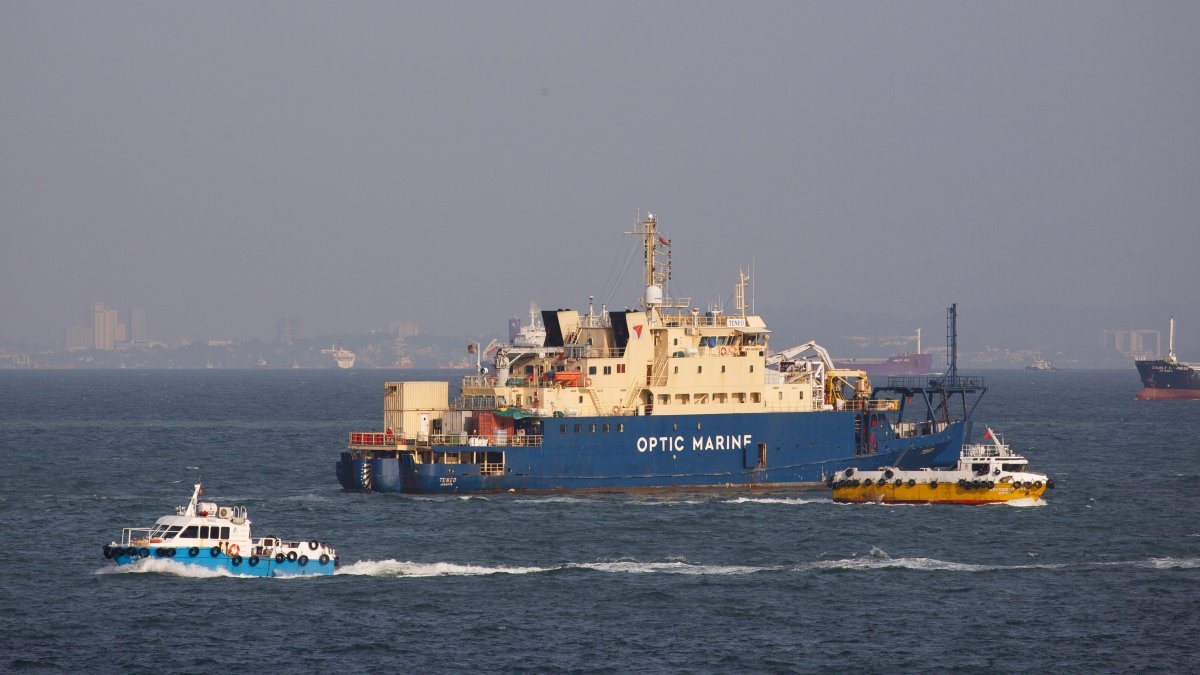
作者/Author(s): Erin L. Murphy and Matt Pearl
網站來源/Source: Center for Strategic and International Studies
日期/Date: 04/04/2025
關鍵字/Keywords: 灰色地帶侵略、海底電纜、中國
摘要:
中國近期開發出一艘能夠在水深4000公尺處切斷海底電纜的船隻。雖然中國聲稱這艘船的任務是開發深海資源,但考量近期發生的事件,中國很可能會利用這艘船破壞連結台灣或其他美國盟友的海底電纜。
- 海底電纜的傳輸資料量遠高於衛星,對跨洲資料傳輸與現代經濟至關重要。
- 海底電纜很容易受到自然災害、崎嶇地形、意外切割和蓄意破壞的影響。雖然海底電纜很常意外斷裂,但最近波羅的海一帶電纜切斷事件頻增,以及外界懷疑幕後主使者是中國,顯示國家行動者開始將切斷電纜作為一種灰色地帶的侵略形式。
- 許多國家認為,他們能夠應付一兩條電纜被切斷。但如果多條電纜同時被切斷,或者是衝突地區的電纜受損,將嚴重限制維修能力,該區域恐面臨數個月的通訊孤立。
- 最重要的是,海底電纜產業以商業利益為導向,由全球幾家少數企業主導。雖然海底電纜產業促進了國際連結的發展,但電纜的鋪設與維護仍由私營公司決定。因此,各國政府必須與這些企業合作,確保電纜部署能符合國家安全利益。
- 也許大家可以共同合作,增加海底電纜基礎設施的備援能力。實現這一目標有兩種方法:
- 第一種方式是在特定區域集中鋪設更多的纜線,便於巡邏的同時也能警告漁船要注意。然而,這表示入侵者可以一次切斷更多電纜。
- 第二種方式則是分散部署更多電纜,以避免單一「箝制點」(chokepoints),降低同時切斷多條電纜的可能性。但這種方法可能會面臨鋪設地點不足,或對漁業區造成干擾等問題。
- 各國政府可提供財務援助及減少部署或維護海底電纜所需的官僚程序,並鼓勵海底電纜業者增加備援機制。
- 此外,多邊合作也不可缺席。
- 有互相連接電纜的國家可合作進行海上巡邏,嚇阻潛在破壞者,並協助保護維修船隻。
- 各國政府也可分享監控情報,以追蹤海底電纜周圍的船隻,偵測可疑活動。
Summary:
China recently developed a ship capable of cutting undersea cables at depths up to 4000 meters. China claimed the vessel was to develop undersea resources. However, given recent events, China will likely use the ship to sabotage subsea cables connecting Taiwan or other U.S. allies.
- Undersea cables are crucial for intercontinental data transfer and the modern economy because they can transmit more data than satellites.
- Subsea cables are prone to natural disasters, rough terrains, accidental cuts, and deliberate sabotage. Although accidental cuts are common, the recent increase in cable-cutting incidents around the Baltic Sea and the suspicion of China-led sabotage suggest state actors cut cables as a form of gray-zone aggression.
- Many countries agree they could cope if one or two cables were severed. Yet, multiple cuts, especially around conflict zones, will restrict the ability to repair the cables and isolate the regions affected for months.
- An important point is that the undersea cable industry is commercially motivated and dominated by a few firms. Although the sector helped expand international connectivity, private companies have the final decision on the deployment and maintenance of the cables. Therefore, governments must cooperate with these firms to ensure they can support national security interests.
- One potential area of cooperation is increasing the redundancy of undersea cable infrastructure. Two ways to achieve this objective exist:
- The first is laying more cables in a concentrated manner so that they can be easily patrolled and warn fishing boats to exercise caution in that area. However, this means more cables can be cut at once.
- The second involves deploying more cables sparsely to prevent chokepoints and reduce the possibility of cutting. However, this approach may not have enough suitable locations or disrupt fishing areas.
- The government could incentivize the increase of redundancy systems by providing financial assistance and reducing the bureaucratic process needed to deploy or maintain undersea cables.
- Multilateral efforts are also necessary.
- Cable-connected countries should cooperate in maritime patrol to deter potential saboteurs and help protect maintenance ships.
- Governments can also share surveillance intelligence to track ships around undersea cables and detect suspicious activities.
